
In our day-to-day, we're surrounded by companies so influential and powerful it's hard to believe they were once nothing but a small business project. And yet, even the world's most famous brands have to come from somewhere. From the 19th-century ventures of now-gigantic companies such as Harley-Davidson to the hands-on genius of Apple's Steve Jobs and Steve Wozniak, our list is filled with success stories that will make you believe anything is possible, as long as you work hard and follow your dreams.
More than a poster child for the American Dream ideal, our list effectively demystifies the notion that it takes lots of luck or absurd talent to make a world-class company. While those two factors play a huge role, the success stories we have for you have more to do with hard work and resilience than fate or genius. Today, let's learn about the untold stories behind the creation of the corporations that have shaped our world.
Microsoft, 1975
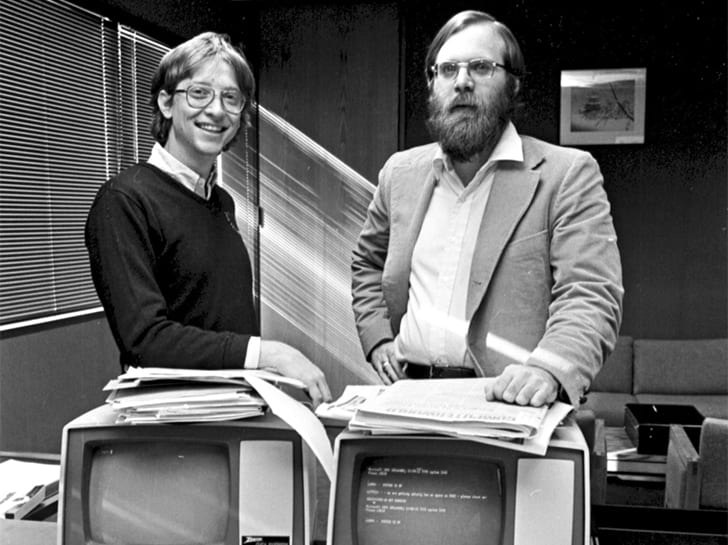
In 1975, 'computer' was still a word that was mostly used by nerds and science-fiction writers. But Bill Gates and Paul Allen, the two genius behind Microsoft's founding, already knew that there was a huge commercial potential in the intelligent machines they were so fond of.
Working passionately in early projects like a traffic data computer and a groundbreaking operative system, the guys at Microsoft signed a pivotal contract with IBM. They were given the resources they needed to change the world. In 1986, by the time Microsoft went public, a whopping stock price rise turned over 10,000 company employees into overnight millionaires. From then on, the company met nothing but success, despite the enduring competition of rivals brands such as Apple.
Subway, 1965
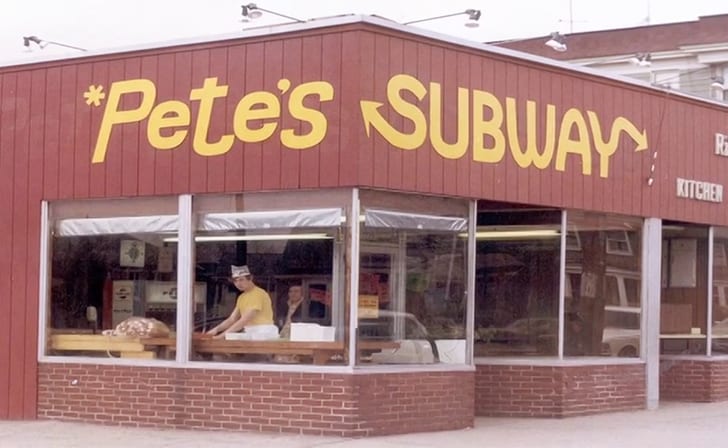
It's a tale that reminds us of the power of the American dream. In 1965, a 17-year-old Fred DeLuca borrowed $1,000 from Peter Buck, a family friend. With those few dollars, he started a local restaurant business, initially known as "Pete's Submarines." Later, the name was changed to "Pete's Subway," and finally, to "Subway."
Whether you enjoy their subs or not, you have to admit you didn't expect Subway to have started as a $1,000 business! But it did. By 1966, DeLuca opened his second Subway restaurant, with a reported 42,000 other locations following until today. In 2020, Subway has more restaurants than any other fast-food chain, being present in over 100 countries.
Burger King, 1953
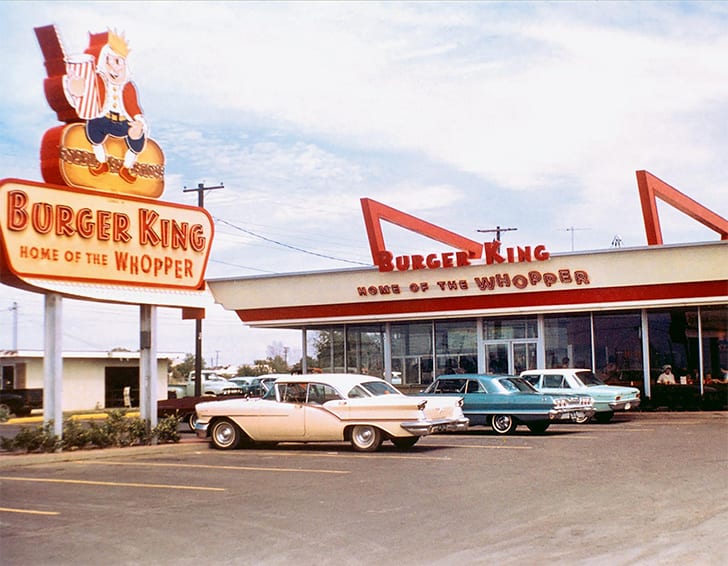
Sometimes, not even the best ideas work out the first time around. The original Burger King founders (Keith J. Kramer and Matthew Burns) saw the first version of the popular fast-food company fail and were forced to sell their business after only 7 years in the market. The first version of Burger King was known as Insta-Burger King and featured two cooking equipment known as Insta-machines.
In 1959, the businessmen James McLamore and David R. Edgerton decided to buy the faltered business and... simplify! They started focusing less on the machinery and more on the burgers' taste, developing the archetypes of the billion-dollar business that Burger King is today.
Apple, 1976

While many believe Apple operated out of the garage of Steve Jobs's parents in its early days, the reality is even more impressive. According to co-founder Steve Wozniak, they actually worked mostly out of Jobs's bedroom. The old maxim "don't work where you sleep" may be true, but Jobs and Wozniak were able to find a way around it...
Jobs' genius and the technical prowess of Wozniak combined in the development of the Apple I, a handmade motherboard with CPU and RAM that was as groundbreaking as anything the company would later do. Curiously enough, Apple was not just founded by Jobs and Wozniak. Businessman Ronald Wayne was an early partner of the company, but he sold his share early on by a mere $800. A big, big mistake, considering the company is now worth an estimated $2 trillion.
Nike, 1964
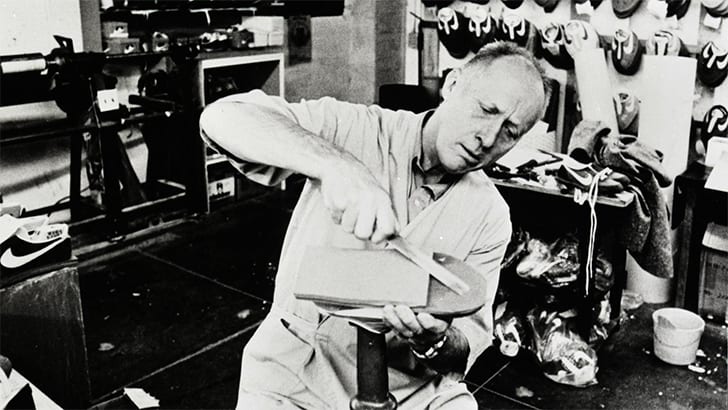
In 1964, track athlete Phil Knight and his coach Bill Bowerman decided to found Blue Ribbon Sports, a company selling imported track shoes from Japan. Blue Ribbon Sports would only be known as Nike in 1971, back when they released their first line of original footwear. The year also marked the iconic Nike swoosh's debut, created by the graphic designer Carolyn Davidson.
A profitable and promising company, Nike developed into a sportswear giant during the '70s. In 1980, they had a 50% share in the U.S. athletic shoe market and decided to go public. Since then, the company hasn't stopped growing, fueled by quality products, affordable prices, and extraordinarily successful advertising campaigns.
Ford, 1913

Arguably America's most pivotal company, Ford didn't appear out of thin air. It took founder Henry Ford 12 investors and $28K to launch Ford's first converted factory in 1903. It was there the iconic idea of Ford's assembly line first started being developed. The concept grew and grew until the fundamental notions of vertical integration were applied at every step of the production process. Needless to say, this was the inspiration behind virtually every successful 20th-century factory.
An innovator, Henry Ford, also become famous for paying his workers twice the market average back in 1914. This made for healthier and happier workers, hence increasing efficiency and productivity. It was one of the first post-Industrial Revolution examples that well-paid workers could actually help companies to get richer.
Coca-Cola, 1886
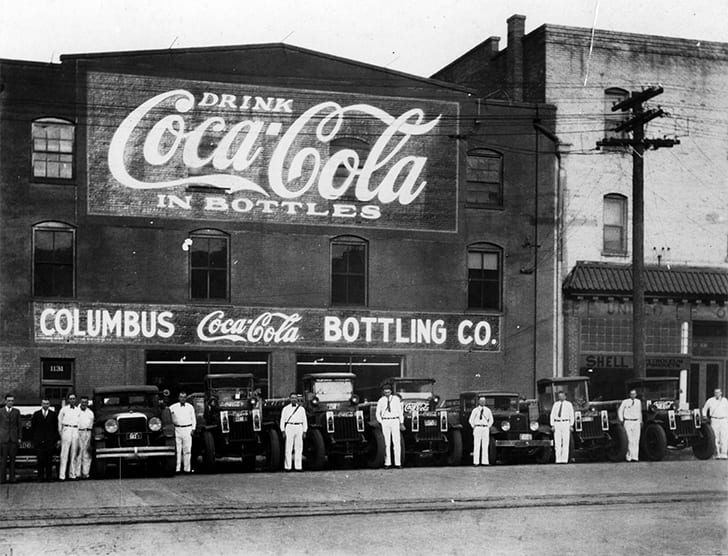
While Coca-Cola is one of the world's most profitable and recognizable brands today, it all started with a man called John Stith Pemberton. A biochemist and Army veteran, Pemberton experimented with many painkillers and toxins throughout his life to try to ease an old wartime injury.
One of his streetcorner pharmacy experiences led to the creation of the very-first Coca-Cola formula. The drink, which was initially considered a headache reliever, came from its two main ingredients: coca leaves and kola nuts. Eventually, Pemberton sold the Coca-Cola formula and brand to the business tycoon Asa Griggs Candler. In a matter of years, Candler was able to take Pemberton's recipe and turn into a nationwide phenomenon.
Nintendo, 1889

Long before the likes of Super Mario and Yoshi turned Nintendo into one of the world's most beloved businesses, the Japanese superbrand was just a small Kyoto company selling hanafuda, a popular type of Japanese playing cards. Between its foundation in the late 19th century and the late '60s, Nintendo developed slowly but steadily, signing deals with Japanese tobacco companies and even Walt Disney!
But in the '70s, everything changed. With the rise of videogames, Nintendo saw a golden opportunity. Inspired by brands such as Atari and Magnavox, they started developing fun games and video game consoles, producing worldwide classics like the Color-TV Game (1977), the Donkey Kong arcade (1981), the Game Boy (1989), and the Wii (2006).
Amazon, 1999
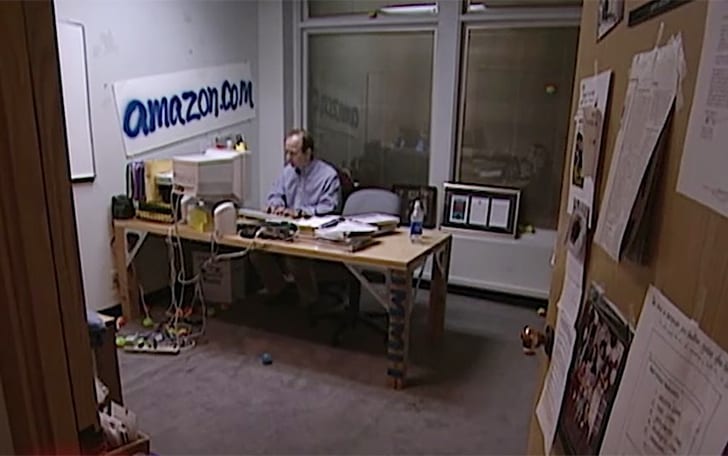
A former Wall Street network developer, Jeff Bezos decided to quit a steady and well-paid job to dedicate to building something amazing. But in the beginning, his idea didn't sound like much: an online bookstore called Amazon? How big can that business really become?
A man of vision, Bezos understood from early on that Amazon was going to be way more than just a bookstore. After rendering his competition in the book-selling market obsolete, Bezos moved on to other types of products and turned his once-small Internet bookstore into an online retail market-topper. By now, Amazon has grown so much and is involved in so many business types that some people are concerned it's going to end up monopolizing the world's economy.
Disneyland, 1955
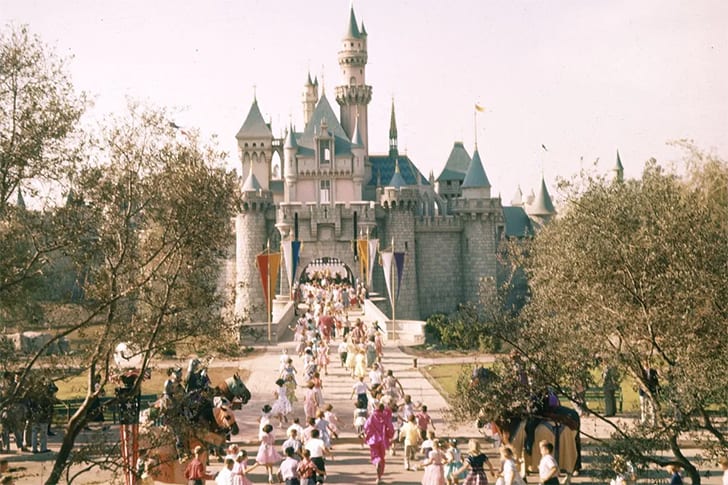
July 17, 1955: Disneyland's inauguration day was later referred to by Disney executives as the "Black Friday," and the name couldn't be any more accurate. Like a modern-day Black Friday, Disneyland's opening was a chaotic, highly-attended, and not-so-well planned event.
A crowd of 28,000, many with counterfeit tickets, gathered around the historical kid's park to join a celebration unlike any other. There were lines everywhere, the fountains were not working due to a plumber's strike, and the clumsy television coverage of the event featured a young Ronald Reagan. The next day, Disneyland's debut was highly criticized in the media; but in all fairness, those kids look as happy as they'll ever be!
J.C. Penney, 1902

Honoring his middle name, the American businessman James Cash Penney was always talented at developing a business and finding new revenue streams. But in the early days of his professional career, he worked for a company called Golden Rule, which had dry goods stores in the states of Colorado and Wyoming.
Ambitious, Penney ended up becoming a partner of Golden Rule and opened his own store in Kemmerer, Wyoming, on April 14, 1902. Not long after, he acquired the entirety of the Golden Rule company and continued to develop it. By 1912, there were 34 Golden Rule stores in the U.S. One year later, the company was consolidated under the banner it is still known for today: J. C. Penney.
H&M, 1947

Västerås may be a relatively small town on the outskirts of Stockholm, in Sweden. But it's the proud birthplace of the very-first H&M store, which was known as Hennes ("her" in Swedish) back in the day. Founded by Erling Persson in 1947, Hennes developed into H&M, becoming one of the world's most valuable retailers.
Selling clothes for men and women, as well as furniture, H&M counts with over 5,000 locations worldwide, and it's worth between $12 and $16 billion. Curiously, H&M is still owned by the Persson family. Erling's son Stefan Persson was in charge of the business for over 2 decades before stepping down in 2020. H&M's current CEO is now Erling's grandson, Karl-Johan Persson.
Harley-Davidson, 1903
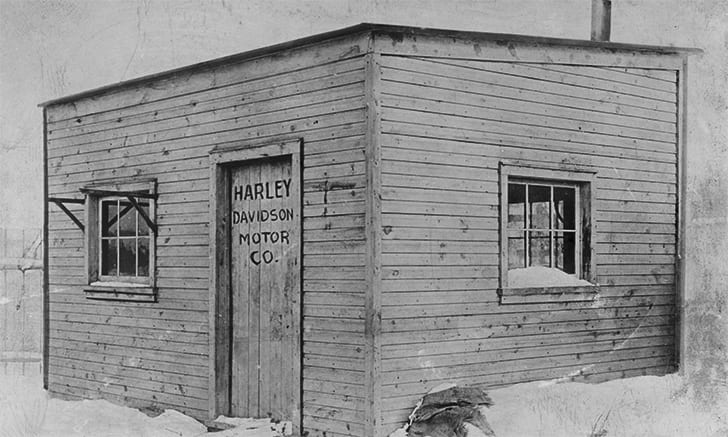
Believe it or not, this tiny wooden shed was the birthplace of one of the most iconic and successful companies in American history. Today, Harley-Davidson is a household name, especially when it comes to motorbikes, but the company started quite humbly in Milwaukee, Wisconsin, at the beginning of the 20th century.
Founded in 1901 by William S. Harley and Arthur Davidson, Harley-Davidson developed its first motorbike in this very location and its first racer model. A few years later, when World War I started, the once-tiny company started making some real money by selling motorbikes in bulk to the U.S. military.
Whole Foods, 1980
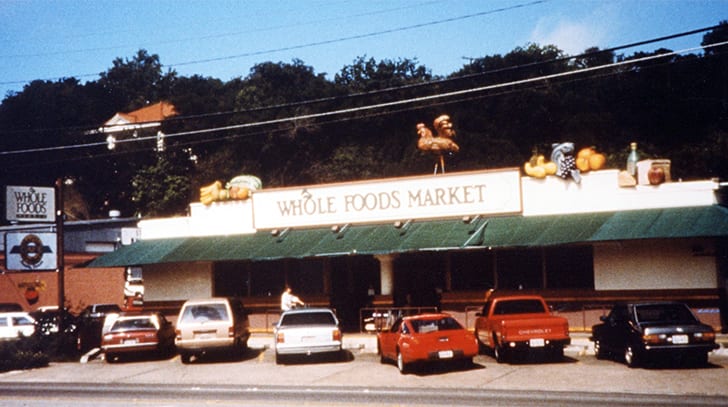
In 1978, John Mackey and Renee Lawson decided to borrow $45,000 from family and friends to create a vegetarian natural foods store, initially named SaferWay. A healthy alternative to the Safeway supermarkets in Austin, Texas, the very-first Whole Foods store was a hippie dream with no shower stall and a total of 19 happy employees.
While the notions of respect for nature and all-natural food don't often combine with a market that's all about profit, Whole Foods was able to grow into a large multinational business without losing its essence. Over the years, the company's been growing more and more, as the public is becoming more interested in eating healthy biological food.
Google, 1996

Google has been such an influential part of our lives. It's hard to believe it didn't exist before 1996. In the mid-'90s, Google was a dorm room-made search engine initially known as BackRub, and the company was little more than a research project of the Standford University students Larry Page and Sergey Brin.
But after developing a groundbreaking algorithm known as PageRank, Brin and Page knew they were onto something special. With a nearly-blank search engine page that was in clear contrast with most of the web's pages during the '90s (often a visually-stimulating cacophony), the two brilliant students were able to start a company that, according to a The Simpsons episode, is destined to dominate the entire world.
Domino's Pizza, 1961
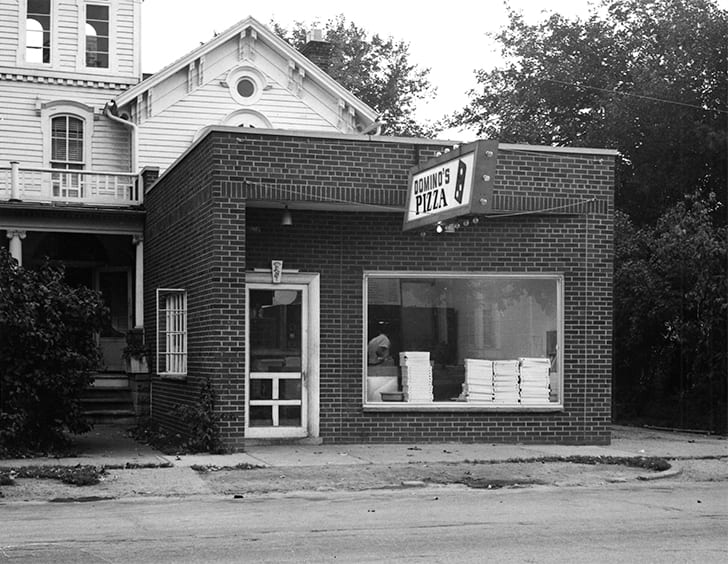
It takes a lot of hard work and belief to turn a small business into a billion-dollar enterprise. In 1961, brothers Tom and James Monaghan spent a total of $1,400 to acquire DomiNick's, a small pizza restaurant in Ypsilanti, Michigan. But the two brothers weren't equally committed to the store.
While Tom had big plans for the little pizzeria, James didn't feel like quitting his day job as a postman. 8 months in, he decided to leave the business to his brother, trading his half for a mere Volkswagen Beetle! By 1965, Tom acquired two additional DomiNick's locations, and that same year, the company changed its name to Domino's. And the rest, as they say, is history.
Barbie, 1965
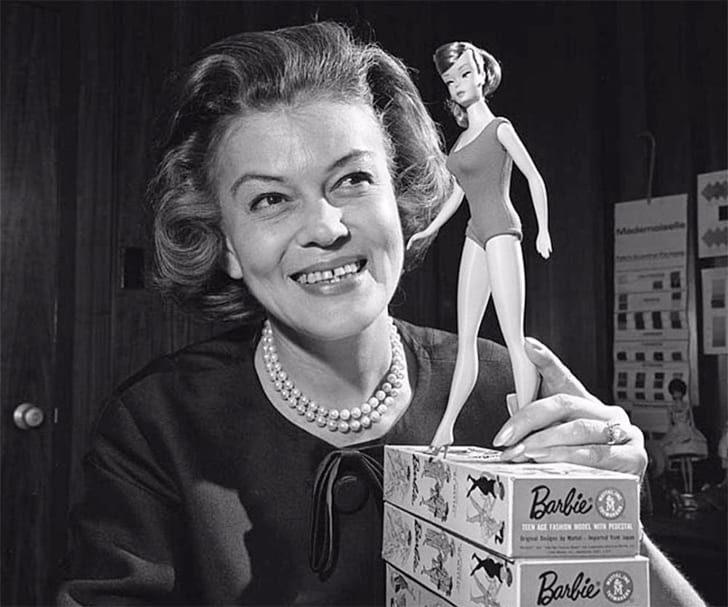
While the Mattel company has generally sold the iconic Barbie doll, it is such an important product it deserves an entry of its own. It all started in 1956, back when Barbie's creator Ruth Handler stumbled upon a German doll called Bild Lilli. It was then she thought of developing a teen/adult doll for young female American children.
Ruth's genius idea was a hit, and Barbie soon became an American icon. Arguably the world's most influential toy, Barbie dolls, have been the target of scrutiny over the years, with many believing it promotes a toxic representation of women. This 1965 picture shows Charlotte Johnson, the first woman hired to design Barbie clothes.
Tiffany & Co., 1837
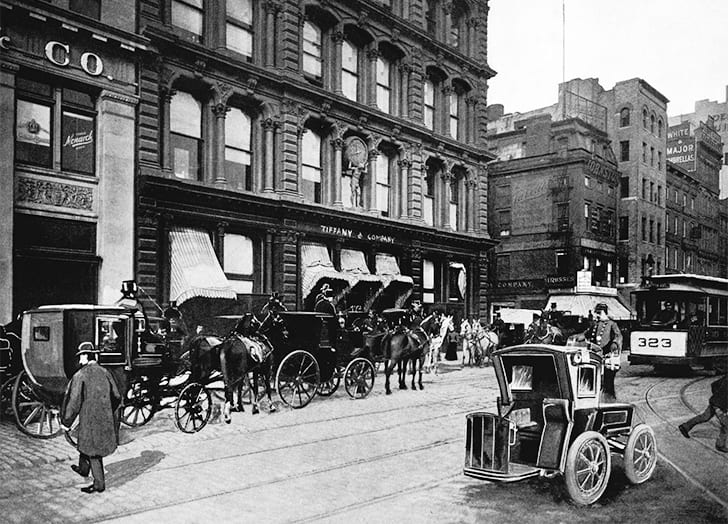
Founded almost 200 years, Tiffany & Co. was always about luxury, good taste, and style. Initially described as a "fancy goods emporium," Tiffany & Co.'s first store in Brooklyn, Connecticut, was not a place for the masses... Selling mostly jewelry, they did not accept credit, and, unlike most stores of that time, they were totally against haggling.
But Tiffany & Co.'s methods, albeit austere, ended up working just fine. A place for those who had enough money to spare, the American luxury retailer survived two World Wars and the Great Depression, and it's still an American staple today.
McDonald's, 1940
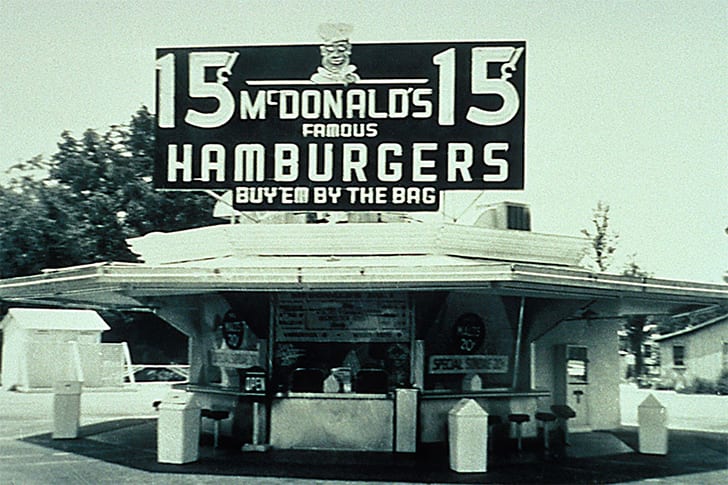
McDonald's founders Richard and Maurice McDonald may not have invented the idea of readily-available food, aka fast-food. But even though they were inspired by the hamburger chain White Castle, their restaurants became so famous and successful that McDonald's' name is now synonymous with the idea of American fast-food itself!
We don't need to tell you just how big of a corporation McDonald's has become. But it still amazes us that it all started with a tiny North E Street at West 14th Street store in San Bernardino, California. From 1955 forwards, the aggressive businessman Ray Kroc built on McDonald's potential to turn into a gigantic franchise-based multinational business.
Samsung, 1938
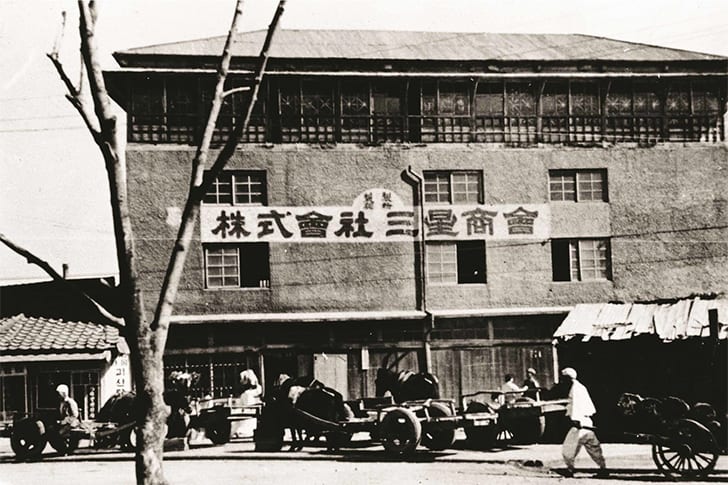
In 1938, a poverty-torn Korea was less than 20 years away from witnessing a brutal war between the South and the North. It was then that Lee Byung-chul, a talented and ambitious businessman, decided to open a trading business in the city of Daegu. Before turning Samsung into the tech giant it is today, Byung-chul experimented with many types of business, including retail, textiles, and security.
Byung-chul's big dreams of making it would later be compensated, especially when the company started investing in electronics. At the time, Samsung was already a large South-Korean company. But when South Korea opened itself to the global market, Samsung started expanding all over the world, selling its products everywhere and building factories in places such as Portugal, Japan, and Austin, Texas.
Starbucks, 1971
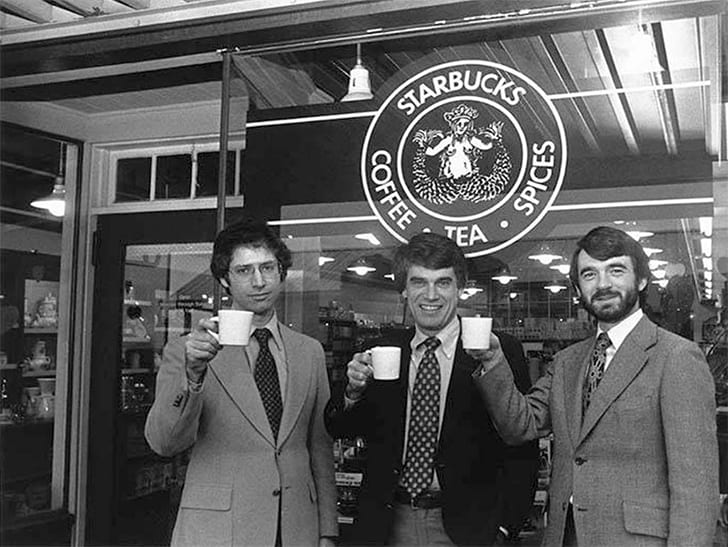
Like any hipster-prone business worthy of its reputation, Starbucks was initially developed by three intellectuals: English teacher Jerry Baldwin, writer Gordon Bowker, and history teacher Zev Siegl. Selling just coffee beans out of a Seattle location, the first Starbucks wasn't making millions but showed many signs of promise.
It turned out all Starbucks needed was an experienced manager who knew exactly how to make money. When businessman Howard D. Schultz bought Starbucks in 1987, he started expanding it relentlessly, opening stores all over the country. In 1992, just 5 years after being acquired, Starbucks was placed in the market and valued at $271M.
Virgin Records, 1972
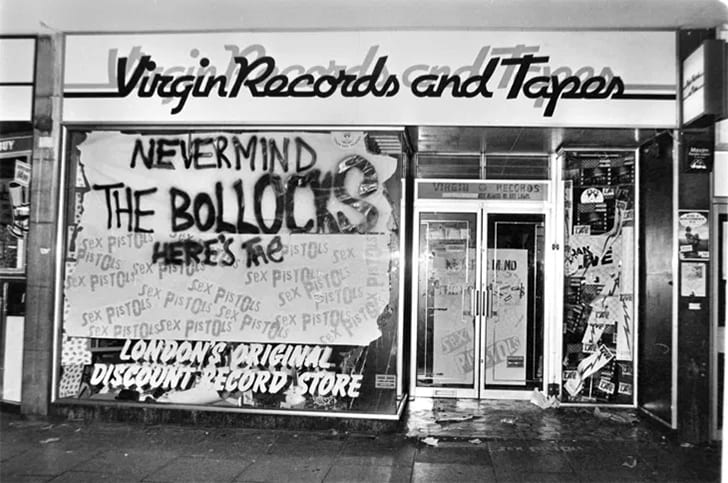
While Richard Branson has invested in all kinds of business ventures over the years, his multi-million-dollar empire started with a genuine love for music. In 1972, Virgin Records was founded by Branson and 3 partners, including the musician Tom Newman. A small record shop selling mostly German imports, Virgin released its first record as a label in 1973: the classic progressive rock masterpiece Tubular Bells by Mike Oldfield.
From the krautrock/progressive rock niche to punk and alternative rock, Virgin became one of the world's most profitable record labels. The media loved the charismatic Branson, who quickly became the face of the company. Over the last decades, Virgin's contribution to music has been invaluable, giving us records by artists such as Nirvana, The Prodigy, Iggy Pop, Mark Ronson, or Tool, just to name a few.
Metro-Goldwyn-Meyer, 1924

Before acquiring the Metro Pictures Corporation in 1919, MGM's founder Marcus Loew was already a well-established movie theater magnate. But what he was about to pull-off in the newly-founded MGM studios was unlike anything America had ever seen before. For decades, the studios dominated the movie market, being especially popular during the age of silent cinema.
In 1925, just one year after the company was founded, MGM released Ben-Hur, an epic adventure-drama film that allowed them to make a $4.7 million profit in their first full year. Many box-office hits followed. Even though MGM went through some economic trouble during the '60s, the company has never stopped being one of the world's most important and influential movie studios.
Taco Bell, 1962
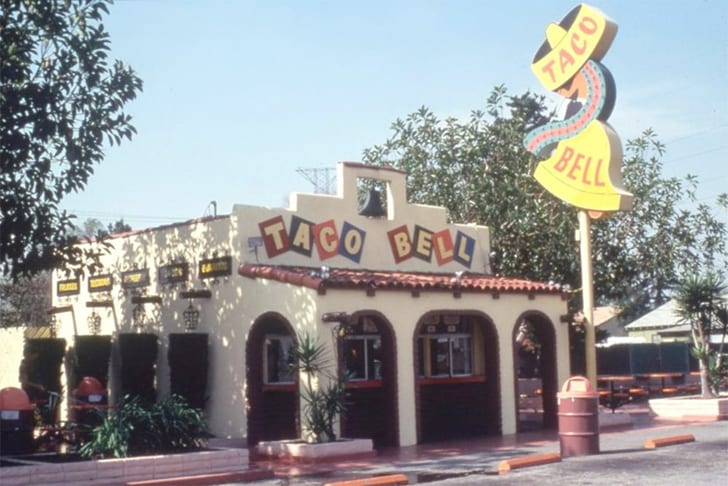
They say the U.S. is the perfect melting pot, and the history of Taco Bell is a fine example of American multiculturalism. The founder of this popular fast-food chain was Glen Bell, a man who owned a hot-dog stand in San Bernardino, California. The only problem was the Mitla Cafe, an across-the-street Mexican restaurant that had way more clients than Bell's hot-dog stand.
Determined to find out what the fuss was all about, Bell learned how to make hard-shelled tacos from the people of the Mitla Cafe. In 1951, he took what he learned to open a new stand in which he sold Mexican tacos instead of American hot-dogs. 11 years later, the entrepreneur was able to open the first proper Taco Bell restaurant in Downey, California.
Sony, 1946

Even though Sony only became Sony in 1958, it all started with an 8-employee store in Shirokiya, founded by the Japanese electronics industrialist Masaru Ibuka in 1946. In the wake of World War II, which ended just 1 year before 1946, Ibuka and his workers developed Japan's very-first tape recorder, a model called Type-G.
Sony continued to produce innovative products and, in the mid-'50s, they obtained global success due to the affordable Sony TR-63 radio, which reached many households in the U.S. Fueled by the wonders of the global market and capitalism, the Japanese brand developed into one of the world's most influential, forever giving a new meaning to the once poorly-perceived "made in Japan" seal.
Pepsi, 1915

Initially called Brad's Drink, Pepsi was created by the drugstore owner Caleb Bradham and initially presented as a treatment for indigestion. Renamed Pepsi-Cola in 1898, the sugary drink started making Bradham some real money by the time he decided to bottle it at a new location. By 1904, Bradham was selling over 19,000 gallons of Pepsi-Cola per year out of a rented warehouse.
Despite its promising start, Bradham's business endeavor resulted in bankruptcy shortly after World War I was over. It was then a man called Roy C. Megargel decided to buy the Pepsi trademark and turn it into the Coca-Cola alternative it is today. Interestingly enough, the Coca-Cola company was given a chance to buy Pepsi on 3 occasions between 1922 and 1933 but denied it every time.
Adidas, 1949
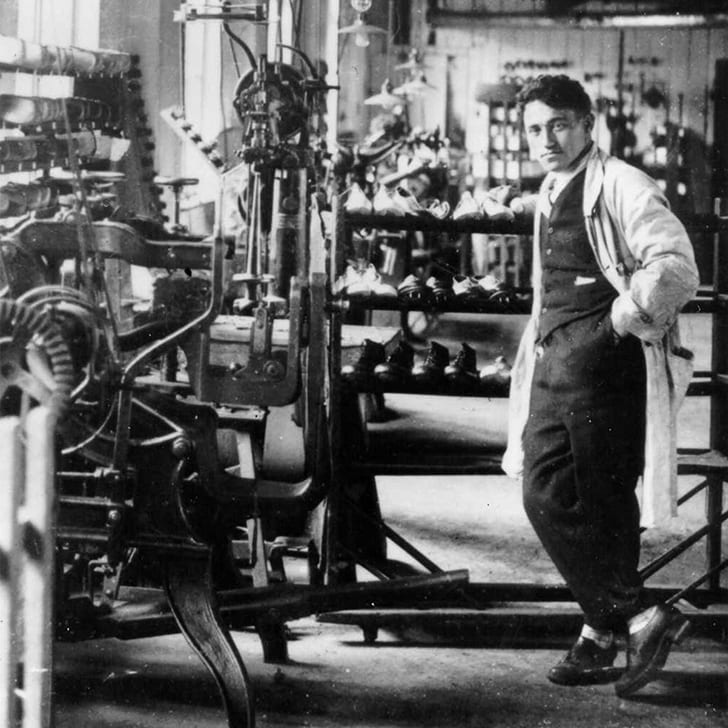
While most great companies start with a partnership, Adidas was created because of a brother's feud. In 1947, the German brothers Adolf and Rudolf Dassler stopped getting along and divided their successful shoe factory into two different companies: Adidas and Puma. It was then an epic rivalry started, with the Dassler's hometown, Herzogenaurach, being divided over the issue!
Both shoe companies were extremely successful, which means there was no clear winner in this historical brother's feud. But, for all we know, it was the pressure of the competition that allowed the Dassler brothers to continue to innovate and produce increasingly better sports shoes.
Colgate, 1924
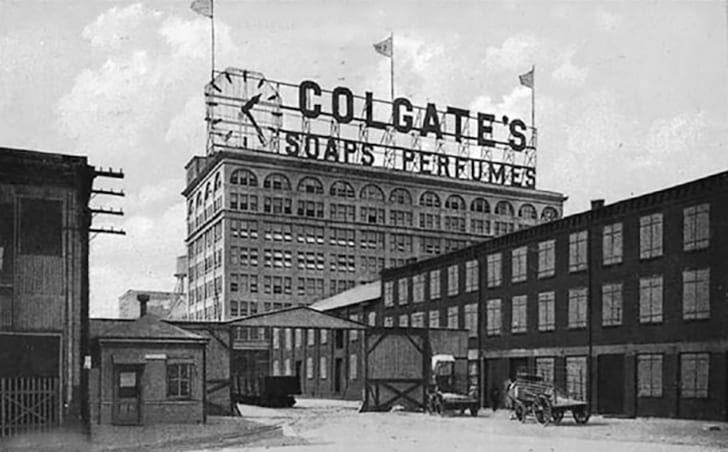
Colgate started as a 19th-century company selling soap before transitioning to oral hygiene products. It became particularly popular during the '50s, fueled by the popular slogan "It Cleans Your Breath While It Cleans Your Teeth."
While we don't normally think of Colgate when we consider the world's biggest companies, this American staple was deemed the only brand in the world purchased by over half of all households! The impressive fact was a result of a market research report published by the Kantar Worldpanel in 2015. The iconic Colgate Jersey's clock, seen in the picture, was inaugurated in 1924.
Levi Strauss & Co., 1880
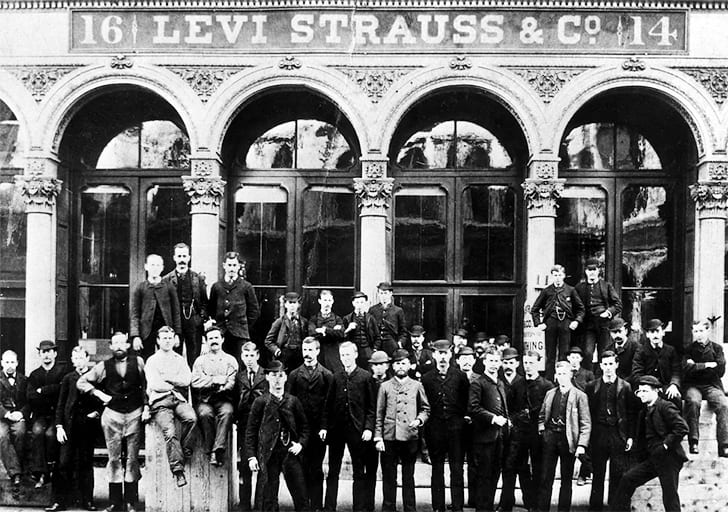
Here's another American dream-type feel-good story. The clothing giant Levi's started as a San Francisco store ran by Levi Strauss, a German-Jewish immigrant. But it was another immigrant, the Latvian-born tailor Jacob Davis, who ended up changing the history of the brand forever.
When he realized the potential of denim, a mostly-ignored high-resistant material, he knew there was a fortune waiting to be made. Collaborating with Strauss, who had the necessary capital, he was able to file a U.S. patent for the denim jean rivet. The button-sized idea seemed like nothing at first, but it was in the origin of Levi's, the billion-dollar business responsible for turning jeans into one of the most popular types of clothing in the world.
TGI Fridays, 1965
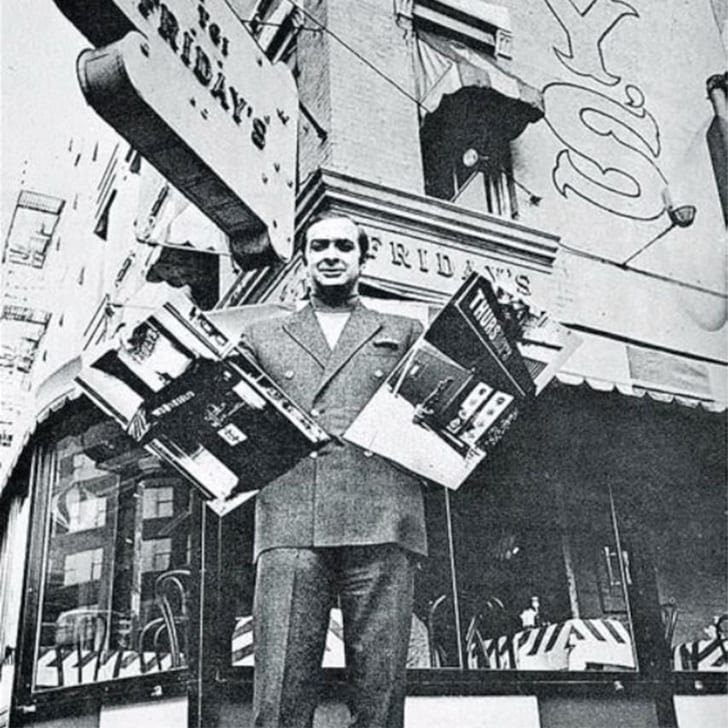
How far would you go to meet women as a young man? Well, TGI Fridays founder Alan Stillman went as far as starting a million-dollar business in the heart of New York City. With an initial $10K investment, he bought a local bar in 1965 and turned it into the very-first TGI Fridays, with the name being inspired by the old college expression "thank God it's Friday."
Stillman's goal was to meet women and create a place in which 20-something New-Yorkers could hang out and have fun together. Characterized by their casual ambiance, the TGI Fridays restaurants have become an American staple and were honored in pop culture by appearing in movies such as 1968's No More Excuses.
Arby's, 1964
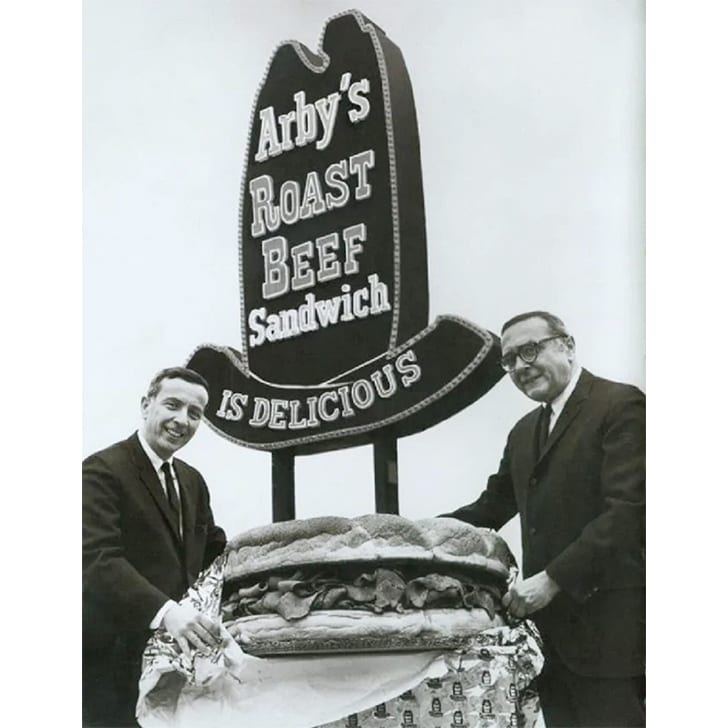
It was 1964, and the brothers Forrest and Leroy Raffel were tired of eating hamburgers in fast-food restaurants. The burgers were great, but they thought there was a need for something different in the fast-food market. With that valuable idea in mind, they founded Arby's, where they served - and still serve - a groundbreaking roast beef sandwich.
A fast-food chain with a delicious twist, Arby's quickly developed into a nationwide business. During the '70s, the company was growing at an unimaginably fast pace of 50 new stores per year! Today, it counts with close to 3,500 locations and about 80,000 employees worldwide.
Dunkin' Donuts, 1948
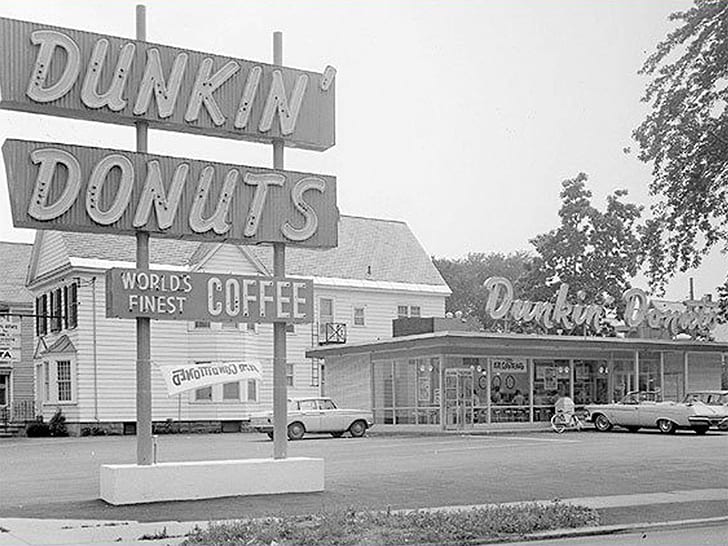
Can something as simple as tasty donuts and hot coffee transform into a billion-dollar business? Yes, it does! Dunkin' Donuts's founder William Rosenberg saw a great business opportunity when he realized donuts and coffee were the two most popular items at the construction sites and factories where he used to sell food.
He started an ambitious company in 1948, operating from a store in Quincy, Massachusetts. In 1963, less than 20 years after the Dunkin' Donuts venture first started, the brand had 100 locations all across the U.S. Today, the company is a beloved coffee shop chain with approximately 12,900 locations in over 40 countries.
Dairy Queen, 1940
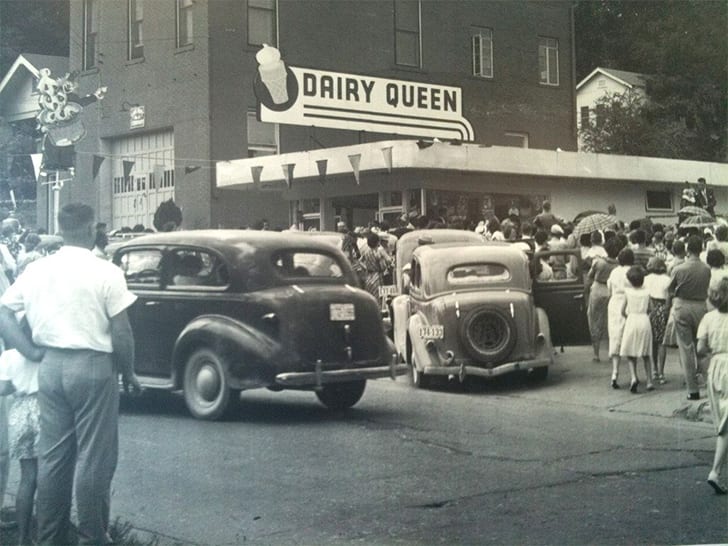
The very-first Dairy Queen restaurant was inaugurated in the city of Joliet, Illinois, in 1940. Today, the restaurant is no longer open, but you can still visit the site and see what's left of this classic American building. Right now, there are over 6,000 DQ locations all over the world and over 4,000 in the U.S. alone.
Like most big fast-food chains, DQ started small and developed fairly quickly into a multinational corporation. A mostly successful business, DQ has recently been through a tough time. In 2017, Vasari LLC, one of the company's main operators, was forced to declare bankruptcy and close 29 of its Dairy Queen stores.
Zara, 1975
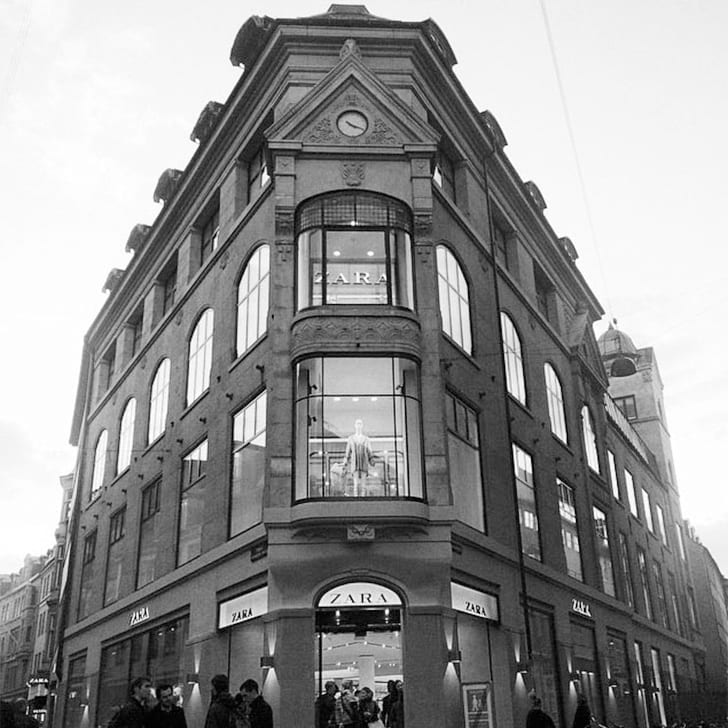
What if every person in the world was entitled to buy and wear affordable clothes that looked just as good as any high-end designer product? That was the genius idea behind Zara's creation, a worldwide-famous retail store company founded in 1975 by Amancio Ortega.
A Spanish entrepreneur, Ortega was able to transform his vision into a personal fortune of $70.6 billion. From an initial store in A Coruña, Spain, Zara grew to become an international brand, counting with over 2,270 locations all over the world, as well as an extremely profitable online store.
Walmart, 1950
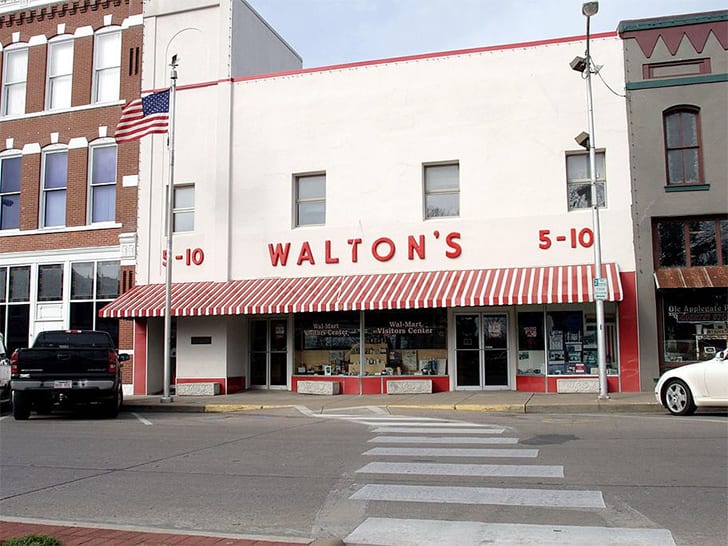
In 1950, Sam Walton and his family moved to Bentonville, Arkansas, to run a small store that was then known as Walton's 5&10. Now functioning as the Walmart Museum, this store would be the first step in the development of the world's largest retailer, forever shaping the history of Bentonville, which is only the 9th largest city in the state of Arkansas.
From a small corner store to a billion-dollar empire, Walmart turned into a hypermarket multinational corporation with a $74.6 billion equity and over 11,000 locations worldwide. Despite all the changes, the Walton family are still the proud owners of over 50% of the company's shares.
United Airlines, 1930
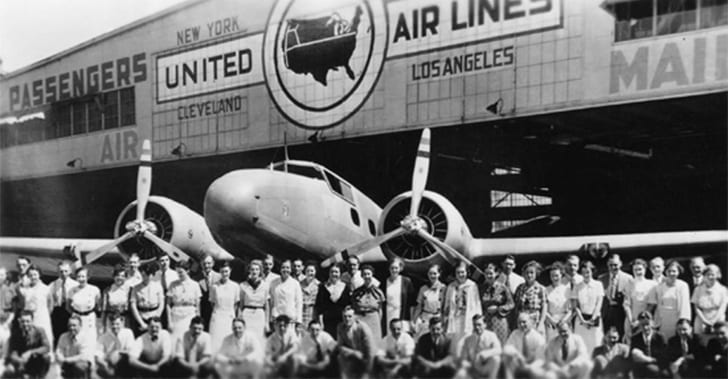
It's impossible to speak of aviation in the U.S. without mentioning the name of Walter Varney, the pioneer responsible for founding the forerunners of Continental and United Airlines. It all started with the Varney Air Lines, a 1926 company that functioned as an air-mail carrier.
Varney's Idaho-based business inspired The Boeing's Company founder William Boeing to create his own air route transport company, operating in direct connection with the United States Post Office Department. In 1929, the aviation magnate decided to buy and merge 4 of the most important airline companies in the country, including Varney Air Lines, to form the industry's giant that's still known as United Airlines.
Chanel, 1909

In 1909, the brilliant fashion designer Gabrielle "Coco" Chanel opened the very first Chanel shop in the booming Paris of the early 20th-century. She did so with the help of Etiénne Balsan, a wealthy textile businessman who was also her lover. The first Chanel store also worked as a salon for the French elites, hence being ideal for a luxury goods business to develop.
With her Parisian connections and thanks to the development of the iconic perfume No. 5, Coco was able to turn that initial store into one of the world's most influential and powerful fashion houses. Today, Chanel's founder is still remembered as one of the fashion world's ultimate heroes and personalities.
Nokia, 1865

Founded by a Finnish-Swede mining engineer, the multinational company we know as Nokia started by being a paper mill, which still sold toilet paper rolls far into the '60s! It's not the start you'd expect a cellphone giant to have, but Nokia has always been a versatile and adaptable company.
Before making millions selling their characteristic hard-as-a-brick cellphones, Nokia produced radios, minicomputers, and even respirators. With the rise of the touch-screen smartphone, Nokia lost some of its importance in the electronics market. But make no mistake: this Finnish giant is more than ready to reinvent itself and get back to the top.
Wendy's, 1969
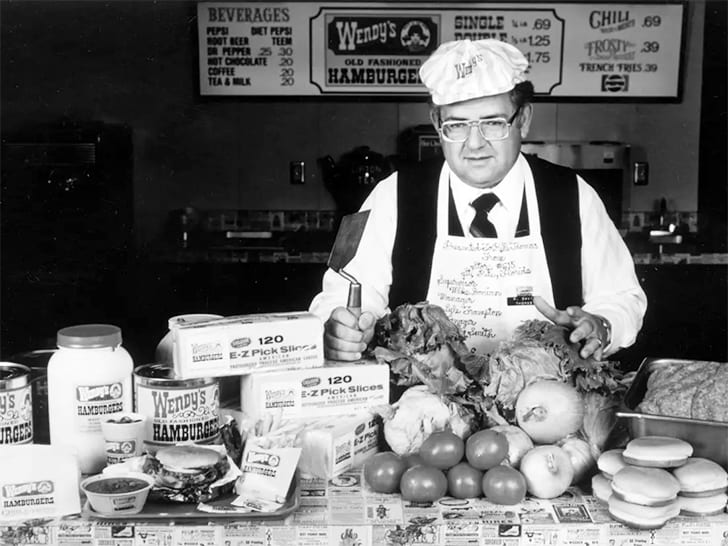
In 1969, the Michigan-based businessman Dave Thomas felt like America needed a good old fashion restaurant. That same year, he opened the first Wendy's restaurant in Colombus, Ohio, focusing on traditional American values and top-quality meat.
Thomas's business venture started as a family-focused business. It was named after his daughter Melinda Lou Thomas (referred to as 'Wendy'), and photographs of her were on display at the original Wendy's restaurant! Eventually, the restaurant started growing, and Thomas's business went from local to national. Today, there are over 6,700 Wendy's locations worldwide.
Suzuki, 1909
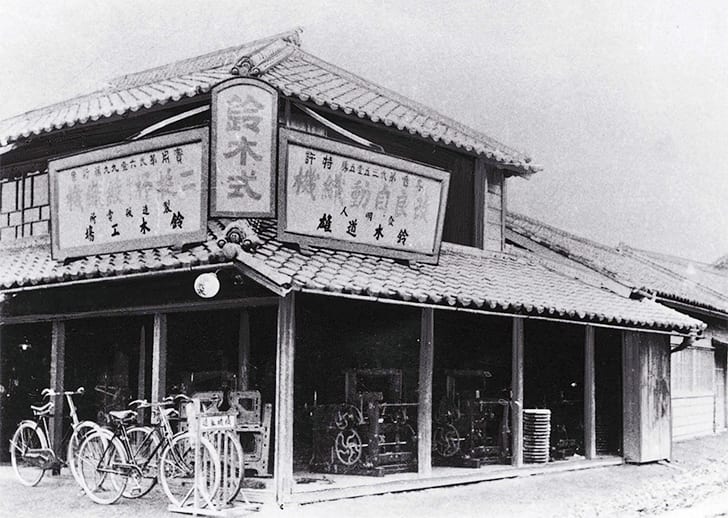
Founded in 1909 by the Japanese businessman/inventor Michio Suzuki, Suzuki became one of Japan's household companies by paying attention to the needs of the market. In the early days of the 20th century, Japan had a huge silk industry. So, Michio invented a top-quality weaving loom to fulfill the market's needs.
Later, he developed several small car prototypes as soon as he realized that there was a big demand for motorized vehicles in the '30s Japan. After World War II, Suzuki went back to producing looms and then motorized vehicles again, always with a central focus on consumer demand and innovation.
Carl's Jr., 1941
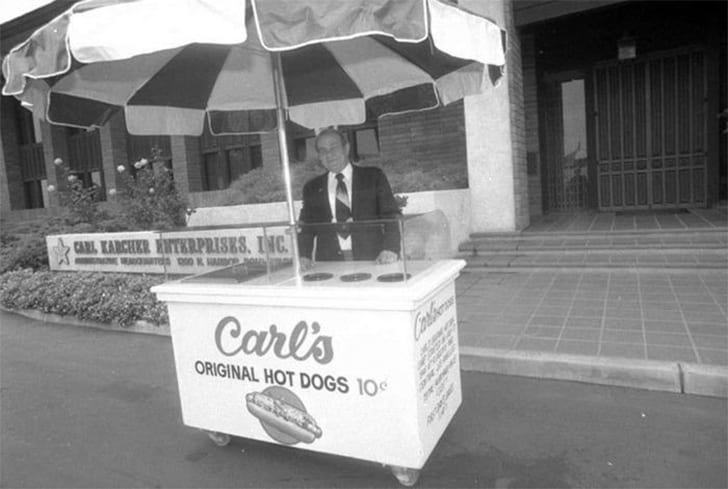
With only $326 ($311 of which borrowed), the American truck driver turned-businessman Carl Karcher was able to start a multi-million dollar business. Money makes money, but Karcher's ability to turn something small into something huge is one of exemplar and undisputed quality.
After all, the first out of over 1,400 Carl's Jr. locations was humbly inaugurated in Los Angeles in 1941, selling tasty hot dogs for a dime and sodas for a nickel. With the revenue he made on this little stand, Karcher was able to open Carl's Jr.'s first proper location in Anaheim, only 4 years after. By the '60s, Karcher already owned 24 restaurants in Southern California.
Xerox, 1959
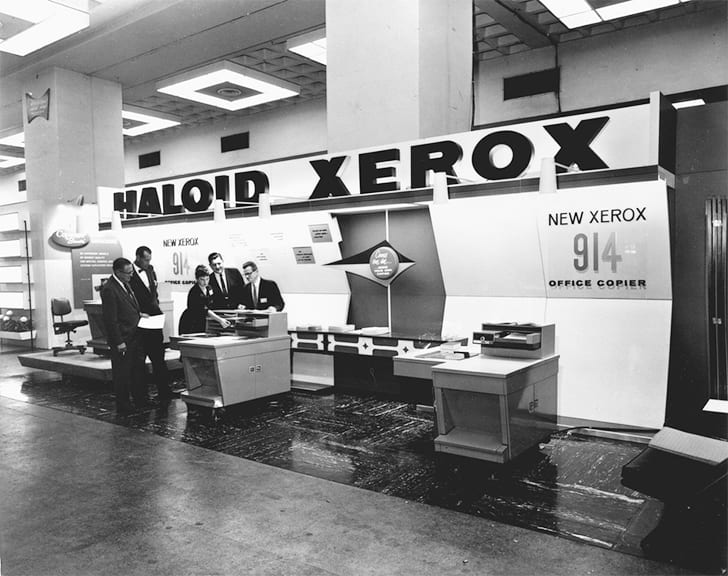
Before being called Xerox, the company responsible for inventing the first plain paper photocopier was known for the less-catchy name of The Haloid Photographic Company. But the Xerox 914, displayed in the picture, was such a revolutionary product it called for a name change years before it was released in the market in 1959.
Created by the physicist Chester Carlson and the chemical engineer John H. Dessauer, the Xerox 914 made such an impact it resulted in whopping revenues for the company. They made $60 million in revenue by 1961 and a total of $500 million by 1965, and that was just the beginning!
Sears, 1893

Richard Warren Sears, the founder of the popular chain of department stores Sears, was a man who endured many ups and downs throughout his life. His father lost the family fortune in a bad stock market deal, dying shortly after. With little to no money, Sears started a business called the R.W. Sears Watch Company after randomly buying a shipment of watches.
In 1889, Sears sold his business for $100K and took some of the money to found Sears, Roebuck & Co., the company which effectively became Sears. Selling way more products than just watches, Sears crushed its competitors by presenting extremely detailed catalogs that had over 300 pages and featured all types of items, from sporting goods to automobiles.
Mercedes, 1901
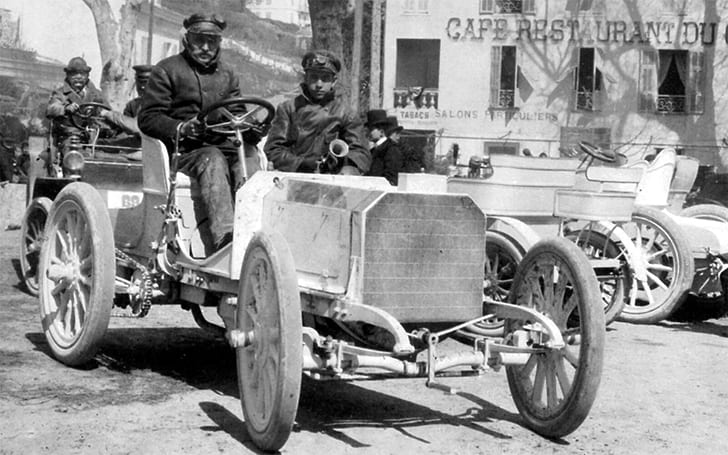
If there's a company that has contributed to Germany's outstanding reputation in the automobiles market, that company is Mercedes. But Mercedes owes much of its success to the couple of Karl and Bertha Benz. While Karl was the engineer behind the first internal combustion engine in a car, his wife's dowry helped to finance the patent way back in 1886.
Five hardworking years after the patent was filed, Mercedes launched its first marketed automobile, seen in the picture. Impressively enough, the German's first automobile already displayed the class and engineering sturdiness that would forever characterize the company. Today, Mercedes-Benz produces about 2.3 high-quality million cars every year.
